The Hudson River Diaries A Compendium of Poetry and Natural History Gleaned from observations in and around Sparkill, New York |
July 2011 |
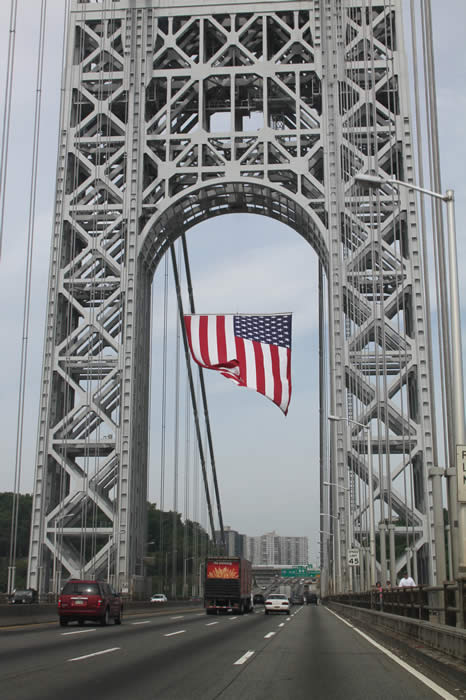 |
The American flag waves over the Hudson river on the George Washington Bridge, July 4, 2011 |
Paulawnia trees--common along the Palisades--have absolutely huge leaves when they're young. |
The Eastern Cottontail is common in bracken and grassy areas along the Hudson. This photograph shows how well they blend in with the local stone--a near perfect match. This morning, I came across a cottontail on the trail besides the river, and it held very, very still in an attempt to exploit its camoflage and remain undetected. Even Isabel, with her dog's sense of smell, had a hard time locating the bunny... despite my "rabbit!" advice to her, which always gets her undivided attention. |
We are truly in the full flush of summer now. All the early trees have bloomed, and the canopy is a solid, deep green. |
Common burdock, an old world introduction, growing at the top of the Palisades. |
The American crow is common along the Palisades. They frequently mob the great horned owls while they are nesting, hoping to get the parents to drop some of their prey. |
 |
A closer view of the crow. |
|
|
The crow croaking out a typical alarm call |
I'm not 100% sure about the species, but this is definitely a bumblebee, feasting on mullein, which is now blooming everywhere. |
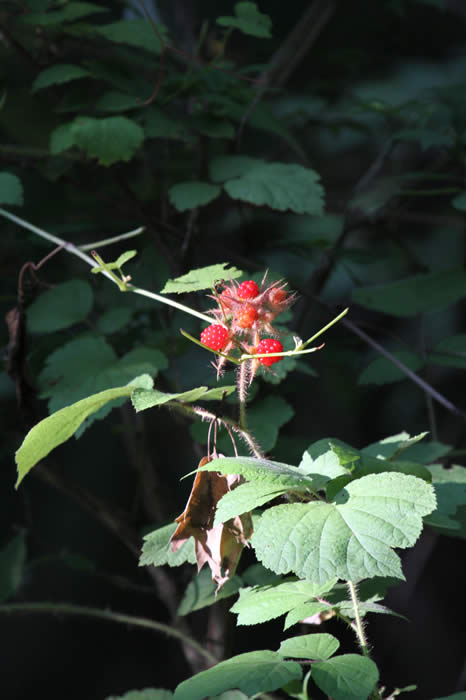 |
Wineberries are in! The first of these sweet, tart, beautiful berries started coming in about July 4 this year, and were just about done by July 20. Chipmunks love these! |
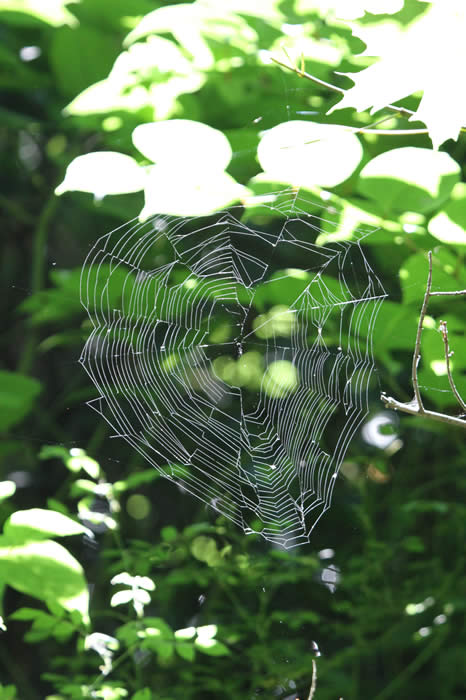 |
A spider-web catches the morning sun on the riverside by the marsh. |
Queen Anne's lace, one of my favorite flowers. This introduced species has been used in the past as a form of birth control. |
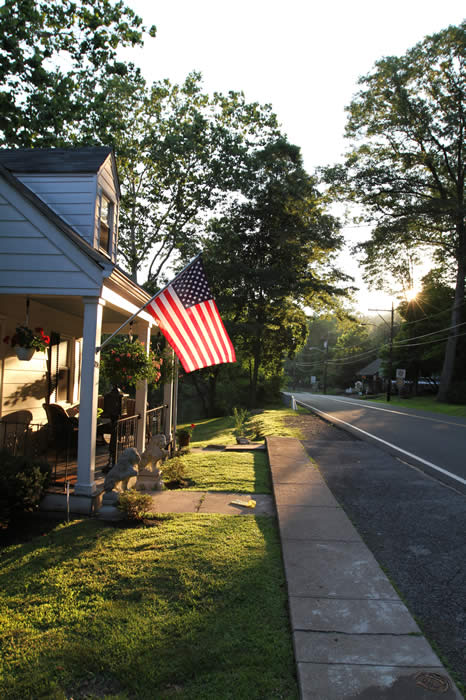 |
Morning sun streams in over Ferdon Avenue on the way down to the river. |
There have been red-bellied woodpeckers in the Tallman State Park nearly every morning this July- five or six at a time. Uncharacteristically, they are often feeding on the ground when I surprise them coming up to the top of the cliff. Their bellies aren't red, but the tops of their heads are. The flock I'm seeing may b a family of fledging juveniles, or just a group of opportunistic birds who have learned that picnic activities leave food, and food attracts bugs. |
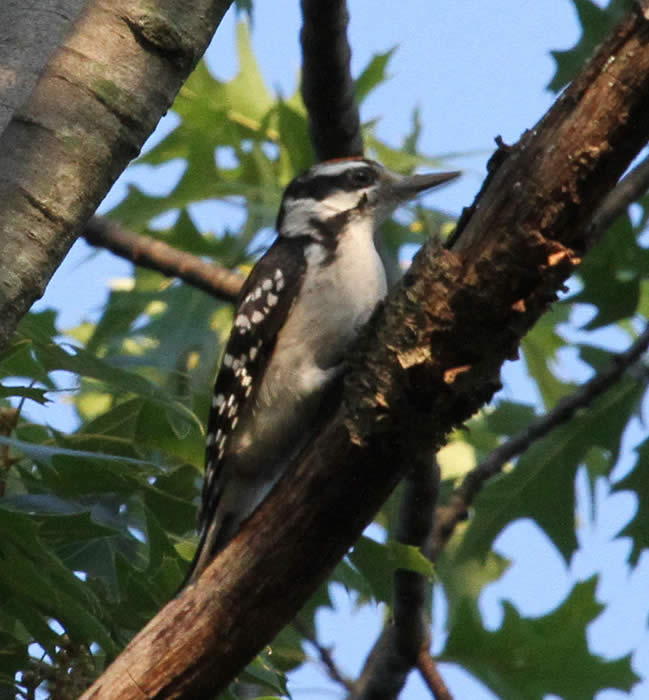 |
 |
Orioles are still around |
How cool is this? A gorgeous blue spider hunting wasp, collecting clay from a preferred spot on July 6. (There were several wasps digging in this spot, where trapped clay, deposited from glacial melt, is leaking out from cracks in the rock.) This scary little wasp catches spiders and paralyzes them with a sting, then brings them back to a nest made of mud with individual cells, each stuffed with spiders. The wasp lays an egg in the cell and the larvae, when it hatches, has a fresh supply of spiders in zombie-like paralysis to feast on until it is ready to pupate. |
There was a good deal of morning fog over the Tappan Zee on July 6. |
Mourning doves are regular visitors to our bird feeder, but this one was catching the rays on the banks of the Hudson. |
 |
Sometimes what isn't there can be compelling |
... and there's a certain grace even in what no longer lives |
The great American Rhododendron, in bloom at Tallman State Park. There are large stands of these magnificent bushes in the shaded areas not far from the parking lot. |
Pokeweed is blooming now, and also setting seed, as can be seen in the next picture. |
another pokeweed frond. |
Orange jewelweed is a touch-me-not whose seeds explode when brsuhed against. I used to be fascinated by this plant when I was young; it likes moist soils, and grew all over the place in Hamburg, Germany, where I grew up. It's commonly found along streams in the Palisades area. This particular specimen had a fine little grasshopper on it, which I only noticed after I got home and uploaded the photograph. |
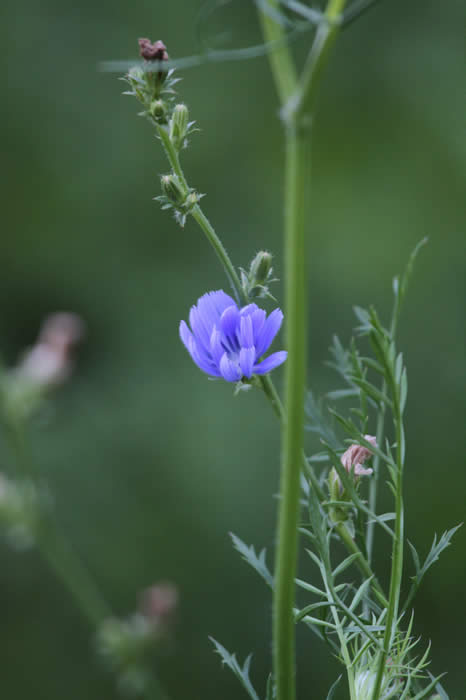 |
Chicory blooms in many waste areas. It opens in the morning and is closed by mid-afternoon. Both root and leaves are considered to be edible. (caution! DO NOT EVER eat wildflowers or mushrooms unless you are properly trained by professionals or experts in plant identification! Some poisonous species can easily be mistaken for edible ones!) |
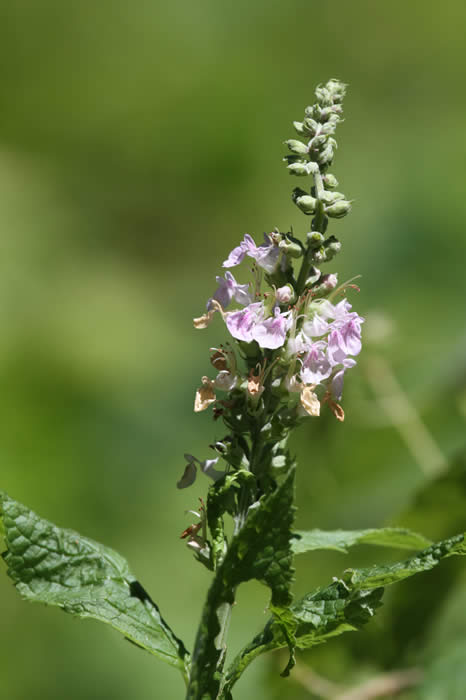 |
July sees the advent of a number of flowering plants with beautiful, prominent spikes of blossoms. Wood Sage, or Germander, is one good example. |
 |
Purple loosestrife is an unpopular invasive in wetland areas, but it has beautiful flowers. |
 |
The first fruiting bodies of sumac appear at this time of year. They will still stand out in the fall after leaves are shed, which is probably the best time to harvest them for tea. |
A juvenile robin caught mid-perch. |
It seems like there's always a great blue heron around... |
|